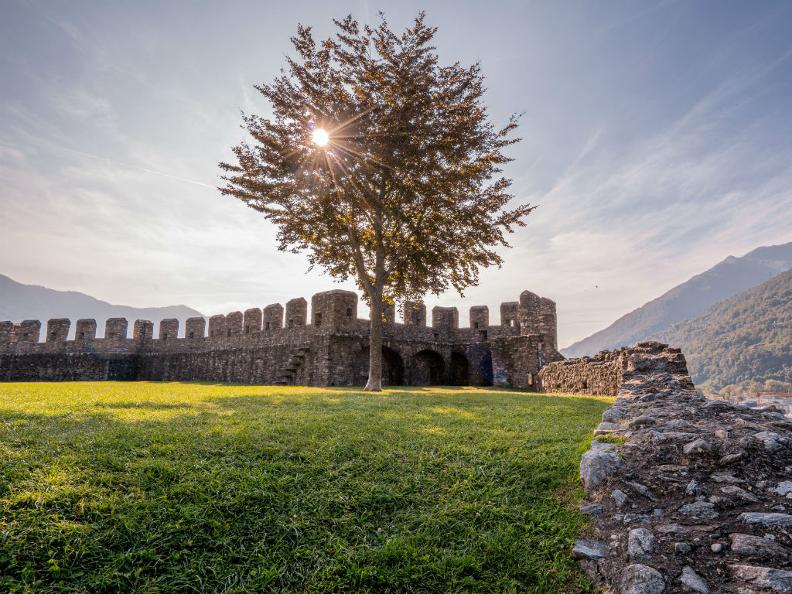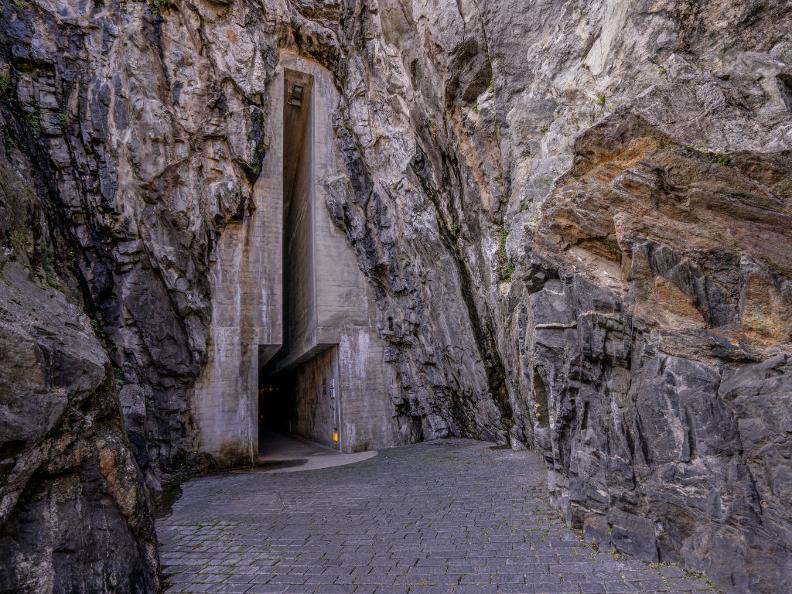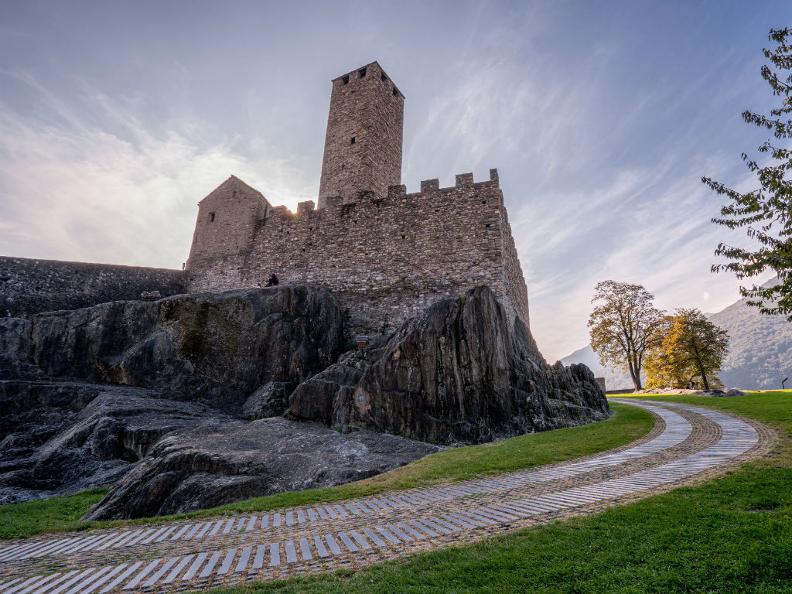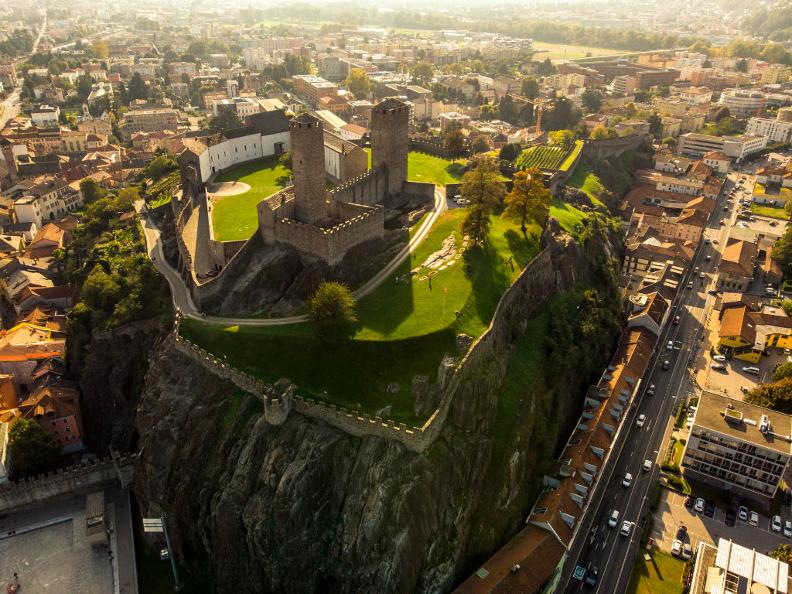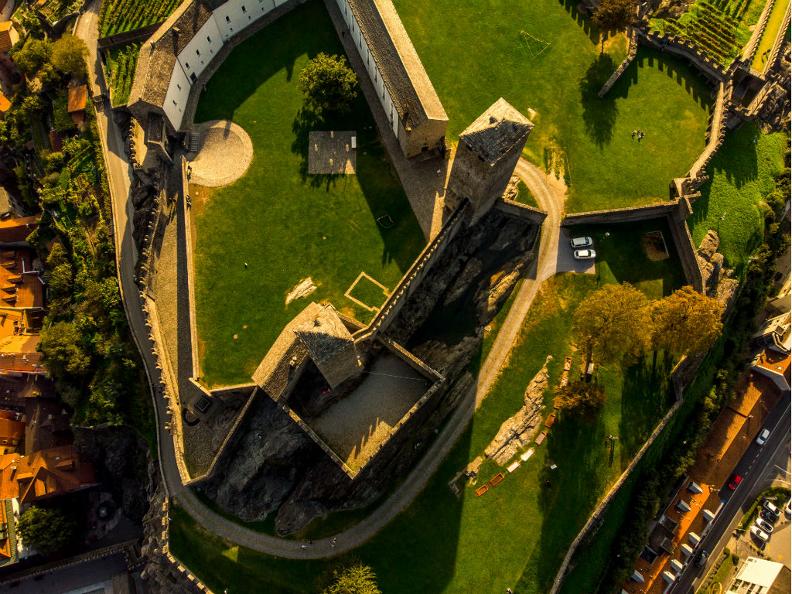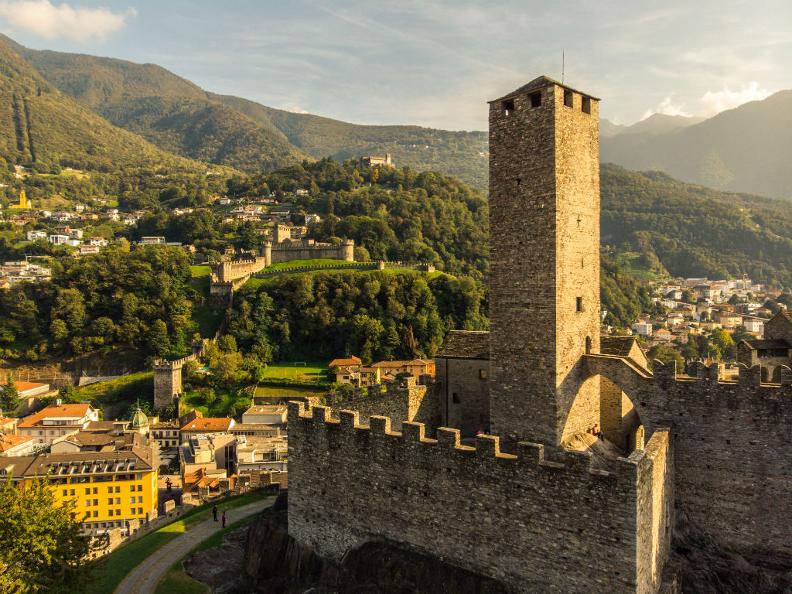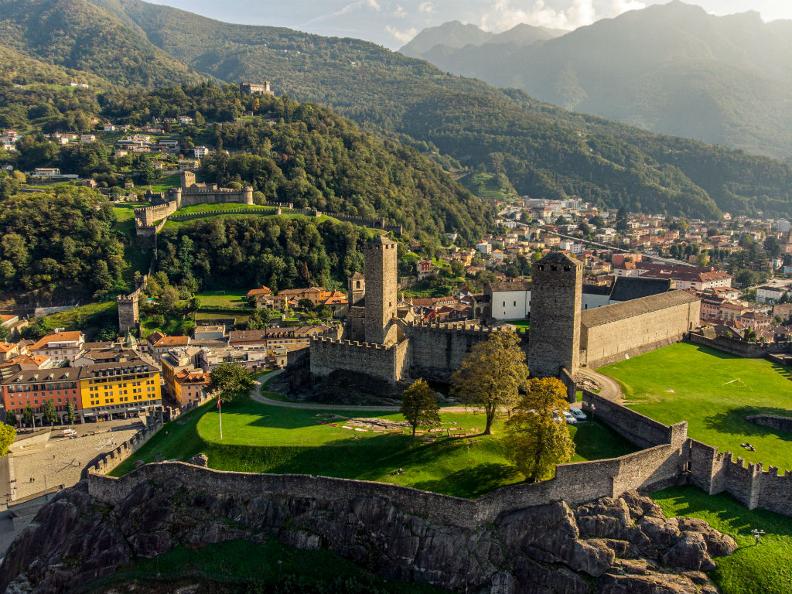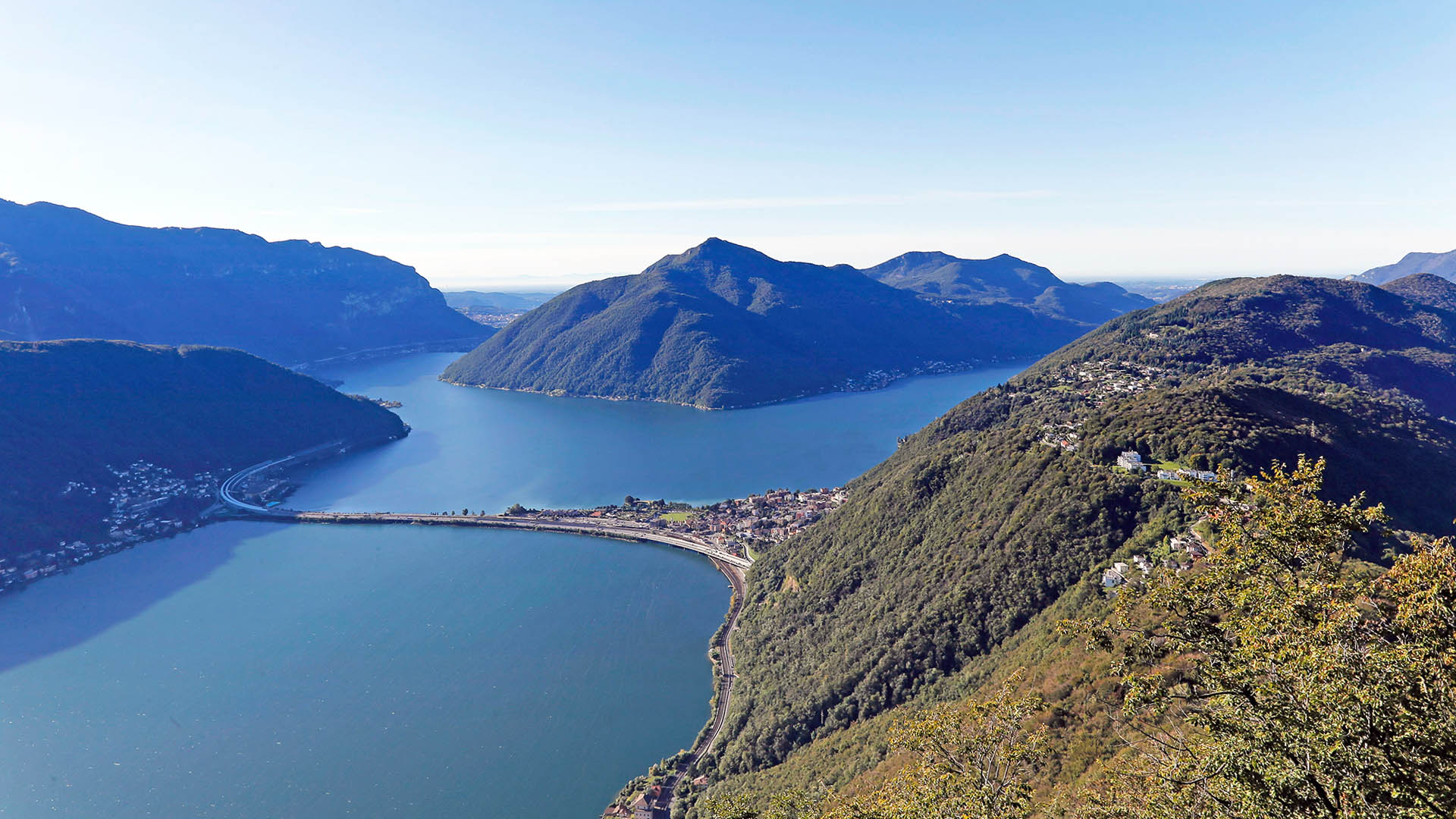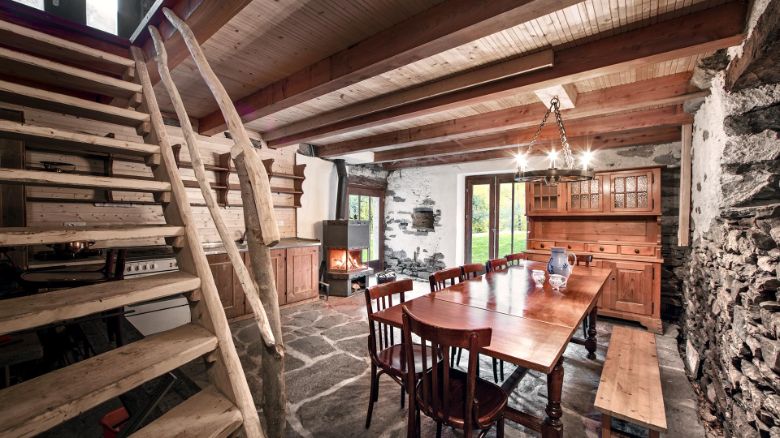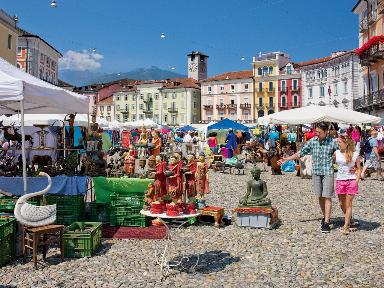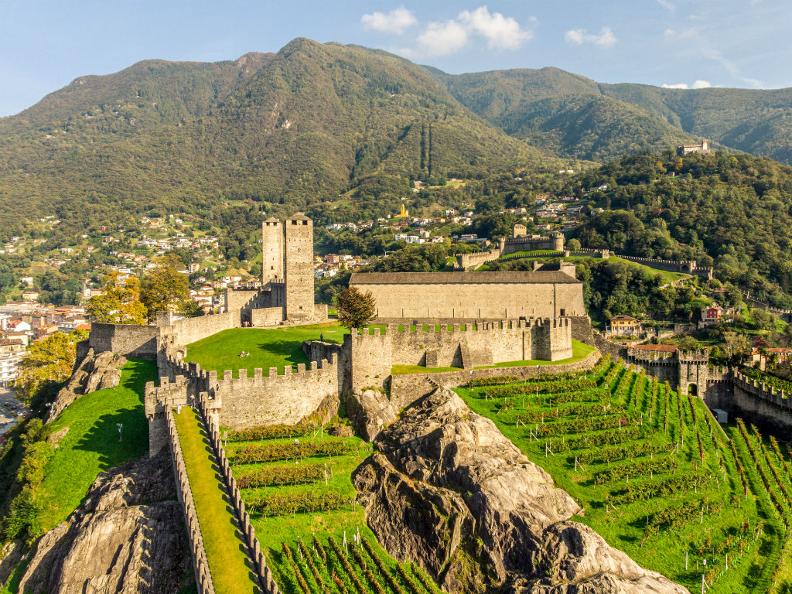
Opening times 2025/2026
05.04.2025 - 9.11.2025: from 10:00 to 18:00
10.11.2025 - 27.03.2026: from 10:30 to 16:00
The first human settlement on San Michele hill dates back to 5500/5000 B.C., in the Neolithic period. The first archaeologically confirmed fortification was constructed in the fourth century A.D. The presence of a fort is also recalled in a number of documents dating back to the sixth century. It was in the fourteenth century that the castle was first called Castrum Magnum, or “Castel Grande”. This is its name today as well. However, during the Swiss occupation it was called Uri (1630) or Altdorf Castle, and in 1818 the Castle of San Michele.
The castle complex that is currently visible dates back to a range of periods: the earliest construction from the thirteenth century was built upon during a “Milanese” phase (1473-1486), which was followed by a restoration in the early 1600s and considerable overhauls in the 1800s. Its current appearance is the result of the most recent restorations (1984-1991) directed by architect Aurelio Galfetti.
The castellated wall is divided into 3 segments. From one of these, 2 branches of walls spread all the way to the city, and at one time linked up with those coming down from Montebello Castle. It was these walls that protected the hamlet long ago.
On the other side is the defensive wall, which at the time of the Visconti, the Lords of Milan, reached all the way to the banks of the Ticino River. Built towards the middle of the fourteenth century, it was reinforced by the Sforzas between 1486 and 1489 with a bridge over the river and a turret against the mountain, which were destroyed in part by the “buzza di Biasca” landslide in 1515.
From the belvedere of the elegant 27-metre Torre Bianca, or White Tower (1250-1350), feast your eyes on a 360-degree view and the impressive 28-metre Torre Nera, or Black Tower (1310).
And for those who appreciate a good meal, the refined Ristorante Castelgrande offers authentic and exquisite dishes, while Grotto S. Michele features typical local menus to be enjoyed inside or out on the terrace while admiring an enchanting panoramic view.
The castle guarantees just the right combination of culture and leisure. Venture out on foot on the steep paths from Piazza Collegiata, Piazza Nosetto, along Via Orico, on a convenient road from Piazza Orico, from the defensive wall or from Piazzetta Della Valle with a convenient lift.
Castel Grande features a museum open to visitors, as well as a slideshow. Be sure not to miss the fascinating temporary national and international displays and exhibitions in Sala Arsenale.
FORTEZZA PASS
Buy your Fortezza Pass directly online or at the InfoPoint of any of the castles and freely visit the three Castles with their walls, the Castel Grande museum, the new Archeologia Montebello exhibition route and the temporary exhibitions.
---
Accessibility Services
This cultural/tourist point of interest took part in the digital data mapping project on accessibility by Pro Infirmis. The project was carried out with the collaboration and support of Ticino Turismo, the four regional tourist organisations and the Department of Education, Culture and Sport.
All information on the accessibility of the partner in question can be found on the following page.
Partner Ticino Ticket

Thanks to Ticino Ticket you can visit this attraction at a discounted price. Ask the ticket at your hotel, campsite or hostel and find out all the offers you can receive.
